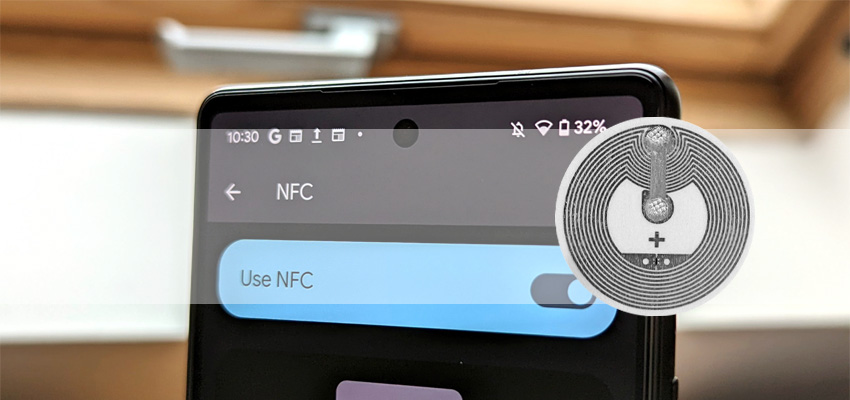Are you a business person looking to upgrade your mobile payment systems with the latest and greatest technologies? Taking advantage of near-field communication (NFC) technology can be incredibly beneficial, but only if you’re using the right NFC type.
In this blog post, we’ll break down all the basics of NFC Forum types, helping you decide which type is right for your business. So grab a cup of coffee and take a seat to learn about NFC Forum types.
What is NFC?
NFC is the talk of the town these days, but what exactly is it? It stands for Near-Field Communication and allows devices to interact with each other by touching or simply being close together.
This tech blurs the line between impossible tasks (like making payments from your phone) that have only been a figment in our imaginations! So if you’re thinking about getting into this whole new world of possibilities – be sure to check out the work done by NFC Forum first. It will ensure you achieve 100% NFC functionality.
What is NFC Forum?
NFC Forum is a non-profit organization that governs and sets standards for Near Field Communication (NFC) technology. NFC is a short-range high-frequency wireless communication technology that enables two electronic devices to exchange data over a distance of up to 10 centimeters.
The NFC Forum was established in 2004 to promote and encourage the widespread adoption of this emerging technology. It aimed to become the preeminent global standards body for all aspects of Near Field Communications technology. It currently has 135 members globally, including leading technology companies, research institutes, and universities.
The organization is divided into three groups: Technical Working Groups, Marketing Councils, and corporate member forums; each focusing on different aspects of NFC development and implementation.
The key role of NFC Forum is to create specifications for all types of mobile payments and applications which use Near Field Communications. It also ensures interoperability between devices and provides guidelines for developers and businesses to implement NFC technology.
Overall, NFC Forum works as a catalyst driving growth in Near Field Communication technologies & addressing potential issues which may arise from their increased use. Through its efforts, both large corporations and small startups alike have taken advantage of this revolutionary system; paving the way for innovations like contactless payment systems or smart homes.
NFC Forum Types – In-Depth Description
There are approximately 3 billion NFC-enabled devices in use today, and the number is growing rapidly. The global marketplace for NFC technology is estimated to reach $54,521 million by 2028, driven by increased mobile commerce transactions, security enhancements, and overall growth in connected devices.
There are several types of NFC chips available that fall into five main categories – Type 1, Type 2, Type 3, Type 4, and Type 5. These tags are intended for different purposes and have unique specifications in terms of maximum read distance and the amount of data written or stored on them.
Type 1 NFC Chips
These are the most basic NFC chip, designed for short-range communications and limited data storage. They are typically used in retail promotions and marketing campaigns to provide product information, store locations, or promotional offers.
They are based on ISO14443A and have a read-only memory of 96 bits. However, their simplicity makes it possible to extend the memory to 2KB. Its data transfer speed is approximately 106 kbit/s. An example of a Type 1 tag is the Innovision Topaz tag 512.
Type 2 NFC Chips
These are popular for mobile payments and access control solutions, where a higher level of security is required. They are based on ISO14443A and have a read-write memory, with the option of converting it to read-only.
Examples of this type of tag include the Ultralight, ST25TN, and NTAGX. These are some of the most popular NFC tags used for various applications, including retail promotions and ticketing.
They have a memory of 48 bytes (extendable to 2K bytes). With a communication speed of 106 kbit/s, you can easily transmit and write data to these tags.
Type 3 NFC Chips
Like Type 1 and Type 2 NFC chips, Type 3 tags use ISO14443A technology. They are based on Sony FeliCa contactless RFID technology, making them ideal for applications where a higher level of security is required.
These chips have a read-write memory of 2K bytes and offer a higher data rate (212kbit/s). As such, they allow more data to be stored, making them ideal for complex applications, such as mobile ticketing.
Type 4 NFC Chips
These chips are compatible with ISO14443A/B standards. They are designed for high-speed communication, offering a transfer speed of between 106 kbit/s and 424 kbit/s. They also have a larger memory capacity of up to 8K bytes. However, you can get it in 2K and 4K configurations.
Additionally, the tags come with read/write capabilities and are typically used in security applications such as access control. You can also convert it to read-only with a simple command.
An example of a Type 4 NFC chip is the DESFire Family. This tag offers high-speed communications, large memory capacity, and a superior data transfer rate for applications where fast data transfer and storage are required.
Type 5 NFC Chip
This is the latest and most advanced NFC chip, designed for long-range communication. They are compatible with ISO 15693 and ISO18092 standards and are used in various applications, including asset tracking and inventory management.
It was designed to meet the miniaturized requirements of wireless networks. The chip is completely sealed, making it more resistant to harsh environments and ideal for outdoor applications.
Examples include the NXP ICODE SLIx family, Fujitsu FRAM, EM 4233, HID VIGO, and NXP UCODE G2iL. These are some of the most advanced and sophisticated NFC chips that offer high performance, fast data transfer rates, and long read ranges.


